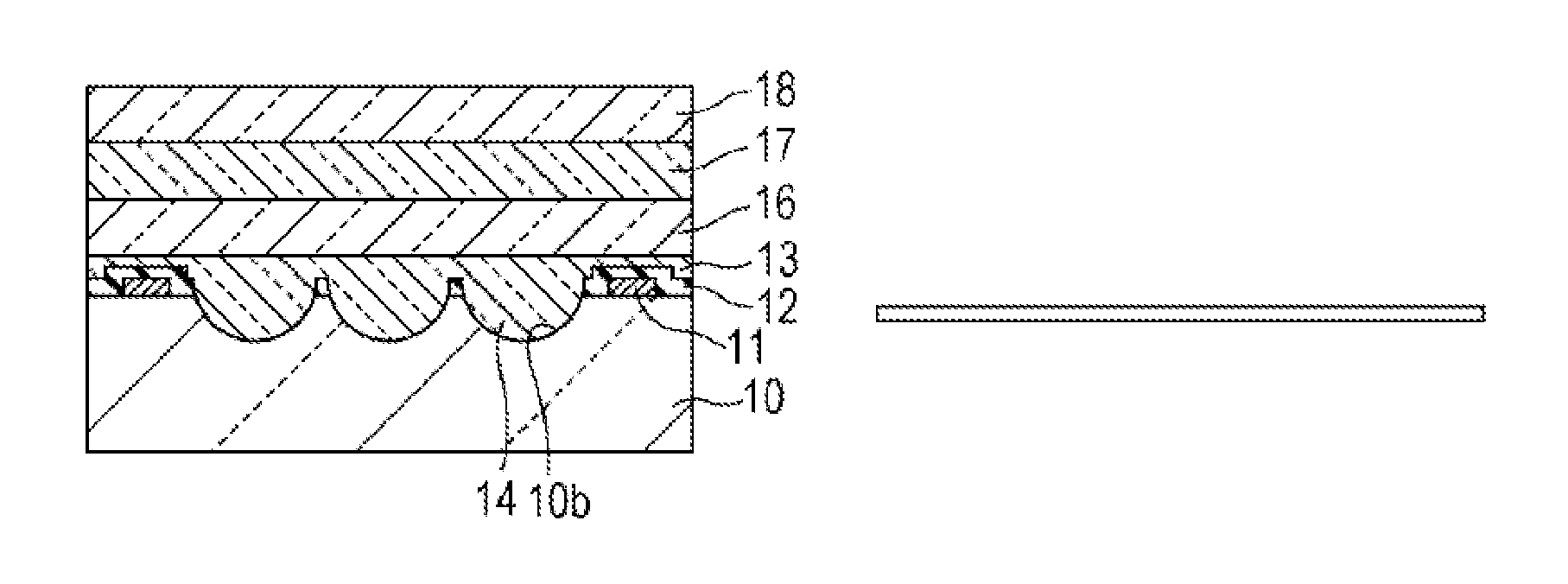Fabrication method for microlens array substrate
a technology of microlens array and substrate, which is applied in the field of fabrication methods of microlens array substrates, can solve the problems of general difficulty in affixing the element substrate and the opposing substrate to each other, film peeling, and difficulty in later correcting the warping of the substrate, so as to achieve the effect of reducing the stress produced
- Summary
- Abstract
- Description
- Claims
- Application Information
AI Technical Summary
Benefits of technology
Problems solved by technology
Method used
Image
Examples
Embodiment Construction
[0034]Hereinafter, an embodiment of the invention will be described in detail with reference to the drawings. It should be noted that in the appended drawings, the scale of the various constituent elements has been changed as appropriate to make the constituent elements more visibly recognizable.
Microlens Array Substrate
[0035]First, a microlens array substrate that can be fabricated through the microlens array substrate fabrication method according to the invention will be described with reference to FIGS. 1 and 2.
[0036]FIG. 1 is a cross-sectional view of a microlens array substrate 1 according to an embodiment of the invention.
[0037]FIG. 2 is a cross-sectional partial enlargement of the microlens array substrate 1 (that is, an enlarged cross-sectional view of a microlens 14).
[0038]As shown in FIG. 1, the microlens array substrate 1 according to this embodiment is fabricated by forming a lens layer 13 configured of the plurality of microlenses 14 by depositing a lens material on a s...
PUM
| Property | Measurement | Unit |
|---|---|---|
| angle | aaaaa | aaaaa |
| thick | aaaaa | aaaaa |
| diameter | aaaaa | aaaaa |
Abstract
Description
Claims
Application Information
 Login to View More
Login to View More - R&D
- Intellectual Property
- Life Sciences
- Materials
- Tech Scout
- Unparalleled Data Quality
- Higher Quality Content
- 60% Fewer Hallucinations
Browse by: Latest US Patents, China's latest patents, Technical Efficacy Thesaurus, Application Domain, Technology Topic, Popular Technical Reports.
© 2025 PatSnap. All rights reserved.Legal|Privacy policy|Modern Slavery Act Transparency Statement|Sitemap|About US| Contact US: help@patsnap.com



